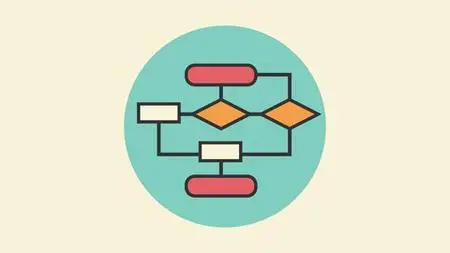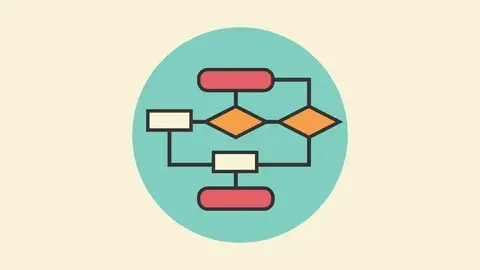Algorithms Data Structures In Java #2 (+Interview Questions)
Last updated 6/2022
MP4 | Video: h264, 1280x720 | Audio: AAC, 44.1 KHz
Language: English | Size: 2.27 GB | Duration: 12h 57m
Last updated 6/2022
MP4 | Video: h264, 1280x720 | Audio: AAC, 44.1 KHz
Language: English | Size: 2.27 GB | Duration: 12h 57m
Tries Data Structures, Ternary Search Trees, Data Compression, Substring Search and Sorting Algorithms
What you'll learn
Grasp the fundamentals of algorithms and data structures
Develop your own algorithms that best fit to the personal need
Detect non-optimal code snippets
Understand data compression
Understand sorting algorithms
Understand tries and ternary search trees
Understand Strings and StringBuilders
Requirements
Core Java
Internet connection
Description
This course is about data structures and algorithms. We are going to implement the problems in Java, but I try to do it as generic as possible: so the core of the algorithms can be used in C++ or Python. The course takes approximately 12 hours to complete. I highly recommend typing out these data structures several times on your own in order to get a good grasp of it.Section 1 - Trieswhat are prefix trees (tries)basics operations: insertion, sorting and autocompletelongest common prefix problemprefix trees applications in networking (IP routing)Section 2 - Ternary Search Treeswhat is the problem with tries?what are ternary search treesbasic operations: insertion and retrievalapplications of tries (IP routing and Boggle Game)Section 3 - Substring Search Algorithmssubstring search algorithmsbrute-force substring searchZ substring search algorithmRabin-Karp algorithm and hashingKnuth-Morris-Pratt (KMP) substring search algorithmSection 4 - Stringsstrings in Java programmingwhat is the String Constant Pool?prefixes and suffixeslongest common prefix problemlongest repeated substring problemsuffix tries and suffix arraysSection 5 - Sorting Algorithmsbasic sorting algorithmsbubble sort and selection sortinsertion sort and shell sortquicksort and merge sortcomparison based and non-comparison based approachesstring sorting algorithmsbucket sort and radix sortSection 6 - Data Compression Algorithmswhat is data compressionrun length encodingHuffman-encodingLZW compression and decompressionSection 7 - Algorithms Analysishow to measure the running time of algorithmsrunning time analysis with big O (ordo), big Ω (omega) and big θ (theta) notationscomplexity classespolynomial (P) and non-deterministic polynomial (NP) algorithmsO(1), O(logN), O(N) and several other running time complexitiesFirst, we are going to discuss prefix trees: modern search engines for example use these data structures quite often. When you make a google search there is an autocomplete feature because of the underlying trie data structure. It is also good for sorting: hashtables do not support sort operation but on the other hand, tries do support. Substring search is another important field of computer science. You will learn about Z algorithm and we will discuss brute-force approach as well as Rabin-Karp method.The next chapter is about sorting. How to sort an array of integers, doubles, strings or custom objects? We can do it with bubble sort, insertion sort, mergesort or quicksort. You will learn a lot about the theory as well as the concrete implementation of these important algorithms. The last lectures are about data compression: run-length encoding, Huffman encoding and LZW compression.Thanks for joining the course, let's get started!
Overview
Section 1: Introduction
Lecture 1 Introduction
Section 2: Trie Data Structures (Prefix Trees)
Lecture 2 What are tries (prefix trees)?
Lecture 3 Prefix tree introduction - insertion and searching
Lecture 4 Prefix tree introduction - sorting
Lecture 5 Prefix tree introduction - autocomplete
Lecture 6 Prefix tree introduction - associative arrays
Lecture 7 Tries implementation I
Lecture 8 Tries implementation II
Lecture 9 Tries implementation III
Lecture 10 Tries implementation IV - associative arrays
Lecture 11 Tries implementation V - autocomplete
Lecture 12 Tries implementation VI - sorting
Lecture 13 Hashing based data structures and tries
Lecture 14 Applications of trie data structures
Section 3: Interview Questions - IP Routing with Tries
Lecture 15 Networking and the longest common prefix problem
Lecture 16 Longest common prefix implementation
Section 4: Ternary Search Trees (TSTs)
Lecture 17 What are ternary search trees?
Lecture 18 Ternary search tree visualization
Lecture 19 Ternary search tree implementation - insertion
Lecture 20 Ternary search tree implementation - search
Lecture 21 Ternary search trees implementation - traversal
Lecture 22 Recursion and stack memory visualization
Section 5: Interview Questions - Boggle Game
Lecture 23 What is boggle and how to solve it?
Lecture 24 Boggle game with ternary search tree implementation I
Lecture 25 Boggle game with ternary search tree implementation II
Lecture 26 Boggle game with ternary search tree implementation III
Section 6: Substring Search
Lecture 27 Brute-force search introduction
Lecture 28 Brute-force search implementation
Lecture 29 Rabin-Karp algorithm introduction
Lecture 30 Rabin-Karp algorithm implementation
Lecture 31 Knuth-Morris-Pratt algorithm introduction
Lecture 32 Constructing the partial match table
Lecture 33 Knuth-Morris-Pratt algorithm implementation
Lecture 34 Z algorithm introduction
Lecture 35 Z algorithm illustration
Lecture 36 Z algorithm implementation
Lecture 37 Substring search algorithms comparison
Lecture 38 Applications of substring search
Section 7: Strings
Lecture 39 Strings and the String Constant Pool (Intern Pool)
Lecture 40 String's immutability
Lecture 41 Strings and StringBuilders
Lecture 42 String reversion
Lecture 43 Suffixes
Lecture 44 Prefixes
Lecture 45 Longest common prefix
Lecture 46 Longest repeated substring problem
Lecture 47 Why are suffix tries and suffix arrays useful?
Section 8: Basic Sorting Algorithms
Lecture 48 Sorting introduction
Lecture 49 What is stability in sorting?
Lecture 50 Adaptive sorting algorithms
Lecture 51 Bogo sort introduction
Lecture 52 Bogo sort implementation
Lecture 53 Bubble sort introduction
Lecture 54 Bubble sort implementation
Lecture 55 Selection sort introduction
Lecture 56 Selection sort implementation
Lecture 57 Insertion sort introduction
Lecture 58 Insertion sort implementation
Lecture 59 Shell sort introduction
Lecture 60 Shell sort implementation
Lecture 61 Quicksort introduction
Lecture 62 Quicksort introduction - example
Lecture 63 Quicksort implementation
Lecture 64 Hoare's partitioning and Lomuto's partitioning
Lecture 65 What is the worst-case scenario for quicksort?
Lecture 66 Merge sort introduction
Lecture 67 Merge sort implementation
Lecture 68 Merge sort and stack memory visualization
Lecture 69 Hybrid algorithms introduction
Lecture 70 Non-comparison based algorithms
Lecture 71 Counting sort introduction
Lecture 72 Counting sort implementation
Lecture 73 Radix sort introduction
Lecture 74 Radix sort implementation
Section 9: Interview Questions - Sorting
Lecture 75 Interview question #1 - implementing TimSort algorithm
Lecture 76 Interview question #1 - solution
Lecture 77 Interview question #2 - implement quicksort with iteration
Lecture 78 Interview question #2 - solution
Section 10: Data Compression
Lecture 79 What is data compression?
Lecture 80 What is run-length encoding?
Lecture 81 Run-length encoding implementation
Lecture 82 Huffman encoding introduction
Lecture 83 Huffman decoding introduction
Lecture 84 Huffman encoding implementation I - helper classes
Lecture 85 Huffman encoding implementation II - encoding
Lecture 86 Huffman encoding implementation III - testing
Lecture 87 LZW compression introduction - compression
Lecture 88 LZW compression introduction - decompression
Lecture 89 LZW implementation
Section 11: Next Steps
Lecture 90 Next steps
Section 12: ### APPENDIX - COMPLEXITY THEORY CRASH COURSE ###
Lecture 91 How to measure the running times of algorithms?
Lecture 92 Complexity theory illustration
Lecture 93 Complexity notations - big (O) ordo
Lecture 94 Complexity notations - big Ω (omega)
Lecture 95 Complexity notations - big (θ) theta
Lecture 96 Algorithm running times
Lecture 97 Complexity classes
Lecture 98 Analysis of algorithms - loops
Lecture 99 Case study - O(1)
Lecture 100 Case study - O(logN)
Lecture 101 Case study - O(N)
Lecture 102 Case study - O(N*N)
Section 13: Algorhyme FREE Algorithms Visualizer App
Lecture 103 Algorithms Visualization App
Lecture 104 Algorhyme - Algorithms and Data Structures
Section 14: Course Materials (DOWNLOADS)
Lecture 105 Course materials
This course is meant for university students with quantitative background (mathematics, computer science) but anyone with core java knowledge can get a good grasp of the lectures



